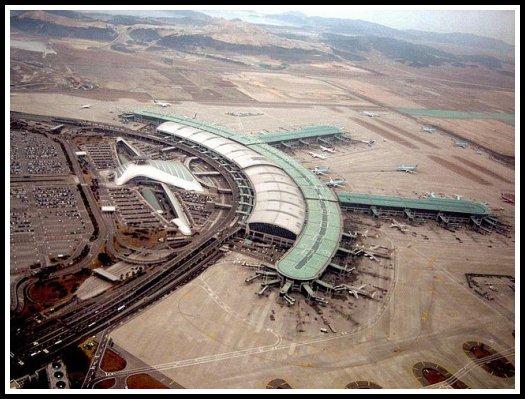Airport terminology and definitions
I see Earth. It is so beautiful!
- Yuri A. Gagarin, first words in space,12 April 1961.

Terminology
The terms aerodrome, airfield, and airstrip may also be used to refer to airports, and the terms heliport, seaplane base, and STOL-port refer to airports dedicated exclusively to helicopters, seaplanes, or short take-off and landing aircraft. In colloquial use, the terms airport and aerodrome are often interchanged. However, in general, the term airport may imply or confer a certain stature upon the aviation facility that an aerodrome may not have achieved. In some jurisdictions, airport is a legal term of art reserved exclusively for those aerodromes certified or licensed as airports by the relevant national aviation authority after meeting specified certification criteria or regulatory requirements. That is to say, all airports are aerodromes, but not all aerodromes are airports. In jurisdictions where there is no legal distinction between aerodrome and airport, which term to use in the name of an aerodrome may be a commercial decision. An aerodrome is a location from which aircraft flight operations take place, regardless of whether they involve cargo, passengers or neither. A water aerodrome is an area of open water used regularly by seaplanes or amphibious aircraft for landing and taking off. Aerodromes include small general aviation airfields, large commercial airports and military airbases. The term airport may imply a certain stature (having satisfied certain certification criteria or regulatory requirements) that an aerodrome may not have achieved. A heliport is a small airport suitable only for use by helicopters. Heliports typically contain one or more helipads and may have limited facilities such as fuel, lighting, a windsock, or even hangars. In larger towns and cities, customs facilities may be available at a heliport. The early advocates of helicopters hoped that heliports would become widespread, but they have become contentious in urban areas due to the unpleasant noise caused by helicopter traffic. A STOL-port is an airport designed with STOL (Short Take-Off and Landing) operations in mind, normally having a short single runway - shorter than 5,000 feet (1,500 m). The term does not appear to be in common usage as of 2008. STOL-ports can only accept certain types of aircraft, often only smaller propeller aircraft, often with limits on the amount of fuel that can be taken.
An international airport is an airport that can accommodate international flights. They are typically equipped with customs and immigration facilities. Such airports are usually larger, and often feature longer runways and facilities to accommodate the large aircraft commonly used for international or intercontinental travel. International airports often host domestic flights (flights which occur within the country) in addition to international flights. In many smaller countries most airports are international airports, so the concept of an "international airport" has little meaning. In certain countries however, there is a sub-category of limited international airports which handle international flights, but are limited to short-haul destinations (often due to geographical factors) or are mixed civilian/military airports.
Many international airports also serve as "hubs", or places where non-direct flights may land and passengers switch planes. International airports often have many airlines represented, and many of these are often foreign.
Passengers connecting to domestic flights from an international flight generally must take their checked baggage through customs and re-check their baggage at the domestic airline counter, requiring extra time in the process. In some cases in Europe baggage can be transferred to the final destination even if it is a domestic connection. In some cases, travelers and the aircraft can clear customs and immigration at the departure airport. As one example of this, are airports in Canada with United States border pre-clearance facilities. This allows flights from those airports to fly into US airports that do not have customs and immigration facilities, on a non-scheduled basis. Baggage from such flights can also be transferred to a final destination in the U.S. through the airport of entry.
UTC | Zulu Time
Copyright © 2012 Roger. All rights reserved. | Sitemap